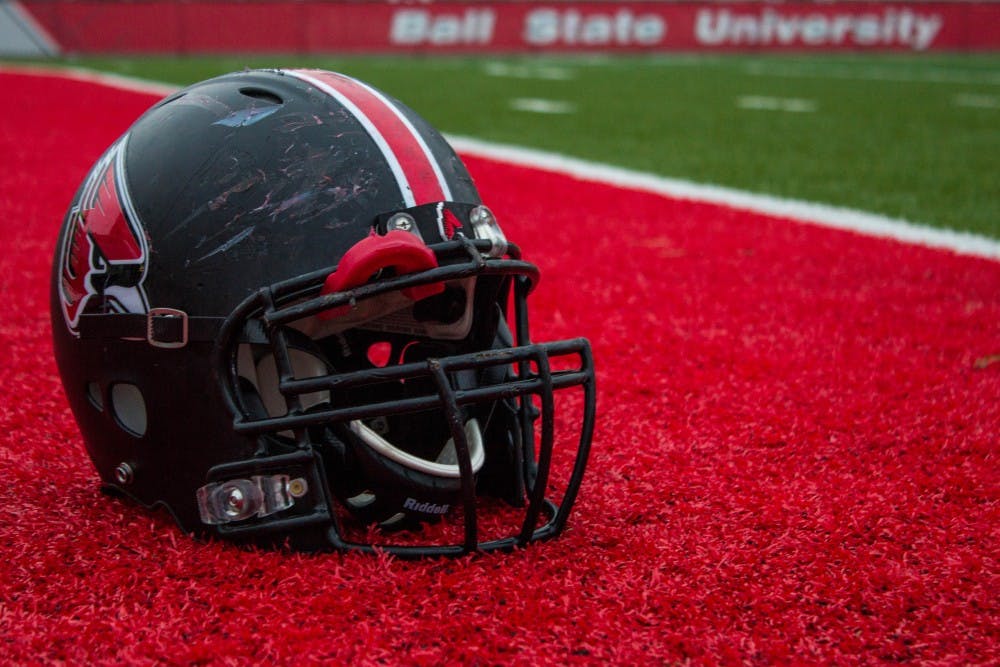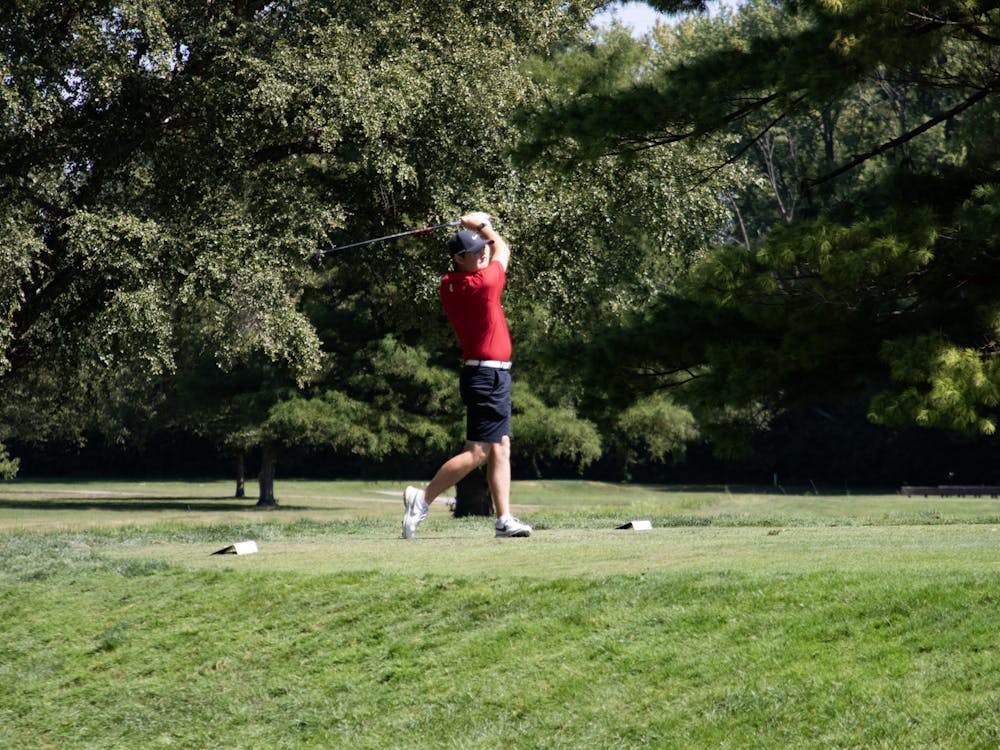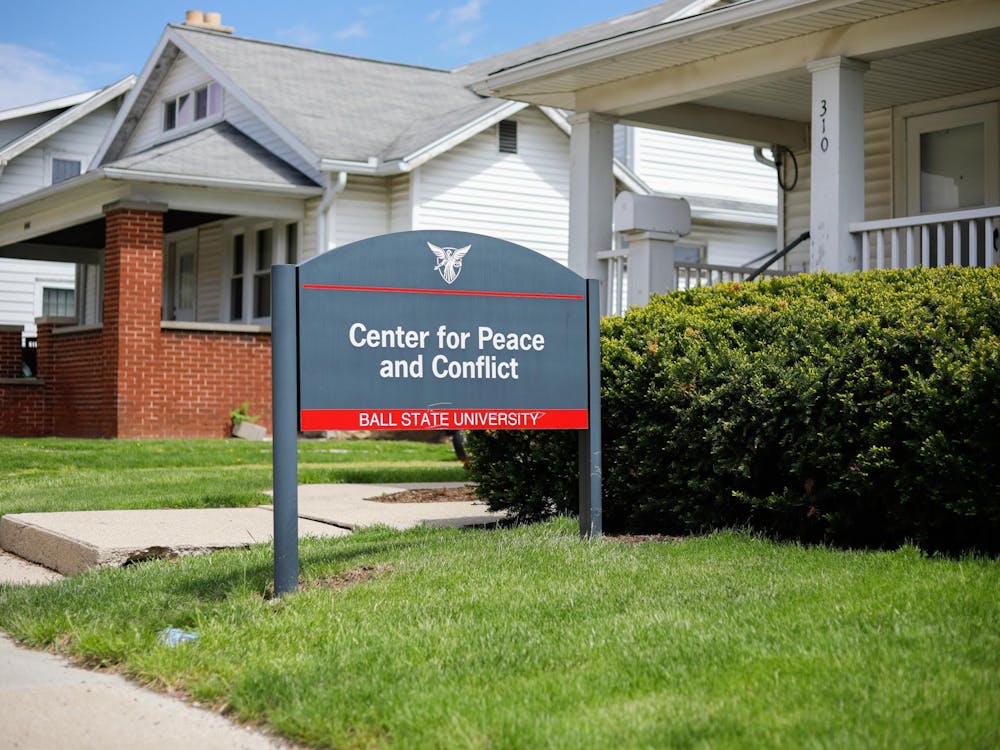Concussion awareness is on the rise with increased media attention and a growing number of exposures across all sports. There are plans in place to limit brain injuries — but the hits don’t stop.
And Ball State, like other athletic programs, has no simple solution for eliminating them.
A total of 15 Ball State student-athletes entered the concussion protocol during the 2015-16 athletic season, a lower number than the three years preceding it. Football, which is the sport most commonly identified with concussions, accounted the largest portion of that total with seven.
Soccer had the highest rate at 10 percent (three concussions out of 30 players), but football had a much larger roster with 115.
Research on concussions has come a long way, but like Ball State head trainer Neal Hazen said, there’s still a ways to go.
“It’s just not black and white as far as what’s a concussion and what’s not,” Hazen said. “You’ve got to really dig in and figure out what’s going on.”

Concussions & Effects
Corey Lacanaria doesn’t remember much about the hit.
The Ball State junior was a receiver at Brother Rice High School at the time. He caught a bubble screen, turned upfield and boom. Lights out.
“I remember catching the ball, everything until getting hit,” he said. “And I do not remember the rest of the game.”
From what he’s told, Lacanaria continued to play. But because of the helmet-to-helmet hit he had just taken, he couldn’t remember the plays, and was asking teammates about which routes to run on every snap.
At that point, Lacanaria’s coaches realized it was time to take him out of the game. The first thing he remembers is regaining consciousness in the fourth quarter, trying to persuade the trainer to let him back in the game.
“I remember being on the sideline and the trainer talking to me, and I was like ‘I’m fine now, I’m good. I’m ready to go back in,’” Lacanaria said. “I was infuriated knowing I had to miss that game. And when they told me I had to miss the next two games, it was obviously frustrating.”
Unfortunately, Lacanaria’s case is not isolated.
NCAA data from the 2009-10 through 2013-14 academic years showed that concussions occurred at a rate of 6.7 per 10,000 exposures in NCAA football during that time period.
Another study conducted by Blue Cross Blue Shield found that concussions in the United States increased 43 percent overall from 2010-15, and 71 percent for patients age 10-19.
But that isn’t necessarily bad news.
Henry Feuer is a concussion management specialist at Methodist Sports Medicine that has worked as an Indianapolis Colts’ team physician since they arrived in 1984. Contrary to the statistics showing that concussions have increased dramatically, Feuer said the spike in numbers is more so due to an improved awareness.
“So to say there’s an increase, I have a hard time with that statistic because you’re just looking at two different numbers,” Feuer said. “You’re looking at the old days, and the new days, and the recognition of concussions. To say that there are more, I really couldn’t say that. …
“And they can’t prove [those hard numbers]. You can’t look at old data. The old data is no good.”
Over time, Feuer added, those players getting their “bell rung” that used to be overlooked are now being better tested on the sideline for concussions. Instead of being told to shake it off, athletes are tested for headaches, blurry vision and difficulty thinking. Symptoms can appear right away, or linger for weeks, months and even years.
Repeated head trauma can lead to crippling long-term effects, most notably chronic traumatic encephalopathy (CTE). This disease has been linked to several former NFL players like Muncie native Dave Duerson, who was found to have advanced brain damage when he died by suicide in 2011.
Some former college football players have filed class-action lawsuits for mishandling of concussions during their playing careers. Former Ball State fullback Geoff Donner filed suit against the MAC and NCAA in early October, claiming he tried to sit out a practice when he played for the Cardinals in the mid-1990s, only to be threatened by having his scholarship pulled if he did. The suit claims he now deals with dementia, depression and memory loss.
There are other factors, Hazen said, that could play a role in these types of long-term effects. But it’s hard to tell how directly these effects are related to all the hits players are taking.
“When you work with these folks, it’s not fun to see what they’re going through and how they’re struggling,” he said. “With a knee injury like an ACL or Tommy John Surgery, 18 months and there’s a good chance they’re back to normal. When you see people struggle for a couple months to come out of a head injury, what’s the next one gonna do to them?”
Lacanaria said he has not experienced any long-term effects of his concussion since it happened. He had to relearn some of the plays, but looking back, it was the best case scenario.
“Honestly, I don’t think it’s worth it [to go back in],” he said. “Resting your head after that is really important. I’m glad I missed those two games, and I got back in when the time I did.”
Concussion protocol
Lacanaria said he has never had another medically diagnosed concussion, but felt a sore head, neck and jaw after a hit at Eastern Michigan last year.
Between trainers and physicians on the sidelines, referees and the spotter above the field, many collisions like this are caught and the game is stopped. But there are instances, and practices are an even bigger concern, where concussion-inducing hits can be missed.
“It’s hard to control,” Ball State head coach Mike Neu said. “When you’re in the middle of the game, and I’m not on the field, sometimes you don't see a collision until you watch the tape the next day. … But I leave that in the hands of our athletic training staff, the officials, and I support whatever decision. If they deem a guy needs to be out of the game, so be it, we’ll support that.”
In that Eastern Michigan game, Lacanaria went to the sideline and was checked out by the Ball State training staff. He passed the tests and was given the OK to go back in the game.
Every school is required to have its own concussion protocol for athletics. Ball State’s protocol follows the specific guidelines laid out by the NCAA and the MAC.
“With the exception of a tweak here and there, which honestly without getting it out and breaking it all down, I would have a hard time telling you [the differences],” Hazen said. “But in a nutshell, they’re all the same.”
All Ball State athletes take a computerized baseline test when they arrive on campus to establish their “normal” when they don’t have a concussion. Some people don’t do well initially, Hazen said, so they follow up again two years later.
When a player takes a big hit in the game, they are brought to the sideline for a series of simple questions and balance tests. Remembering the play, walking a straight line and counting forward and backwards are some examples of what an athlete may go through.
“Some of the tests I have trouble doing without a concussion,” Hazen said. “So you’ve got to weigh everything.”
If a player is determined to have a concussion, they’re done for the day. They then have to enter the concussion protocol, which is typically about a week-long process. Once they are symptom-free they take the impact test, and if they pass the next step is a gradual reintroduction to activity and contact.
But if they do check out on the sideline, they go back into the game under close scrutiny, because symptoms can take some time to show up.
Part of the problem with diagnosing concussions, however, is that players often don’t want to come out of the game. A study of the 2012 season by Harvard and Boston University researchers found that college football players reported only 1 of every 27 head injuries.
Ball State athletic director Mark Sandy said the protocol has come a long way, but the important thing is to make sure coaches are teaching proper fundamentals.
“I think the whole process of how coaches are teaching the safe way to make contact and tackle — don’t lead with your head, don’t have head-to-head contact, don’t target — all those things are gonna help,” Sandy said. “There will be fewer of those collisions where one or both heads are involved, which will cut down on some [concussions].”
One slight difference in Ball State’s protocol is that after returning from a concussion, players are required to sign a waiver that acknowledges that they could suffer another. Hazen said after two pretty good ones, a player’s career is usually scrutinized very closely from there on out.
It’s impossible to completely get rid of concussions, but Ball State obviously doesn’t want to put any athlete at a super increased risk.
“It’s the old rule No. 1,” Hazen said. “You play football and soccer and some other sports, and you’re gonna get concussions. And rule No. 2 is you can’t change rule No. 1.”
 Helmet Safety
Helmet Safety
In football, helmets are the last line of defense before a head injury occurs. And thus, they aren’t cheap.
Ball State has spent $75,930.51 on three football helmet orders since 2012, according to records obtained by the Daily News.
Some of the more expensive helmets Ball State uses cost between $300 to $400 apiece, but football equipment manager Ryan McGorry said it’s worth it if it’s going to keep a player safe.
“There’s helmets out there that are $100. I’m not gonna put a kid in something that is a bottom of the line, $100 helmet and give up [their safety],” McGorry said. “We’re paying $300+ for some of those other helmets, but they rank at the top of the perspective of safety, lightweight, all that kind of stuff.”
The bulk of Ball State’s football helmets are Schutt and Riddell — the two most well-known brands. Specifically, McGorry said, the Riddell SpeedFlex and Revolution Speed are the most commonly worn on the team.
Both of those are rated 5 stars by the Virginia Tech helmet ratings, which measures helmets by their related risk of concussions. Safety is the No. 1 priority, but it’s also important to put an athlete into something that fits well.
“If they’re not asking for it, I’m not going to force them into something they’re not comfortable with,” McGorry said.
The team’s existing helmets are sent back to the manufacturer each year, as they have to get recertified. A portion are put through a drop test to make sure they’re still OK for play.
This year was a little unique, however, because Ball State got new red helmets to go along with the current ones. Mark Sandy said football usually picks something they want to do each year, and this year Neu wanted to throw it back to 1970 with the red.
With the addition of the red helmet — which came with a red facemask — the team now has a red, white and black helmet as well as three facemasks.
“Three is I think pretty good for us in the MAC, for a recruiting standpoint and being able to show kids that we’re keeping up with the Joneses on that end of it,” McGorry said. “Now, we would just replace or add on to what we have. It’s not like next year, we’re gonna get something else.”
With all the new helmets and technological advances that have come about, one of the simplest ways to try and limit concussions is a good mouthguard.
If they are used properly, they can absorb some of the force between the mandible and maxilla when the jaw clenches down. But many players chew on them, or cut them off because of the gag reflex, which only cuts down on their effectiveness.
“There’s not a helmet or a mouthguard out there that can prevent all concussions,” Hazen said. “It’s gonna happen regardless.”
To be clear, concussions don’t just run rampant. The media attention and increased recognition have just brought them to light more than ever before.
Feuer brought up a point that concussions today are equivalent to where cancer research was 50 years ago.
There’s been a lot of progress, but the road ahead is still a long one.
“It’s not new to us,” Hazen said. “But to a lot of the world, it is new.”





